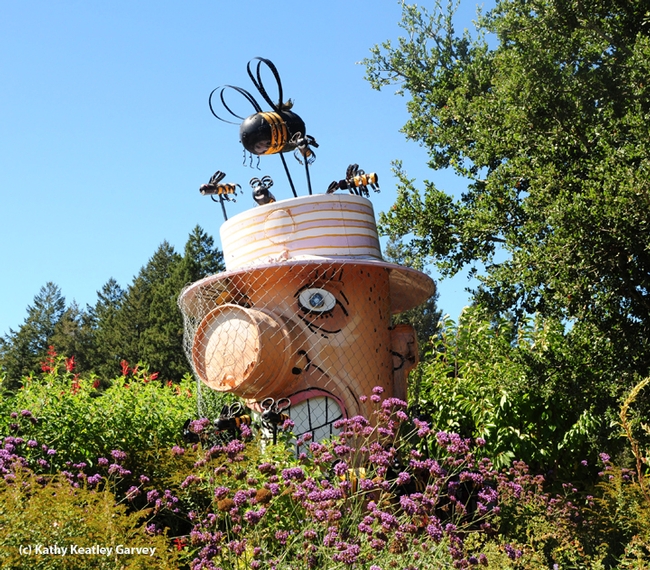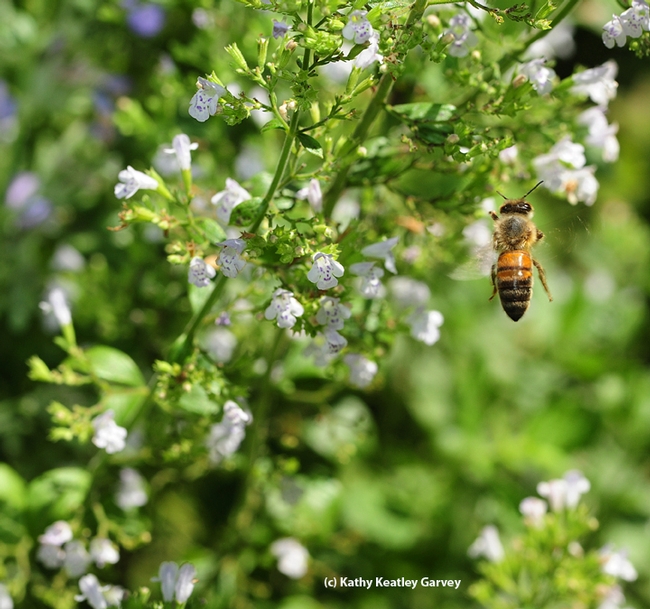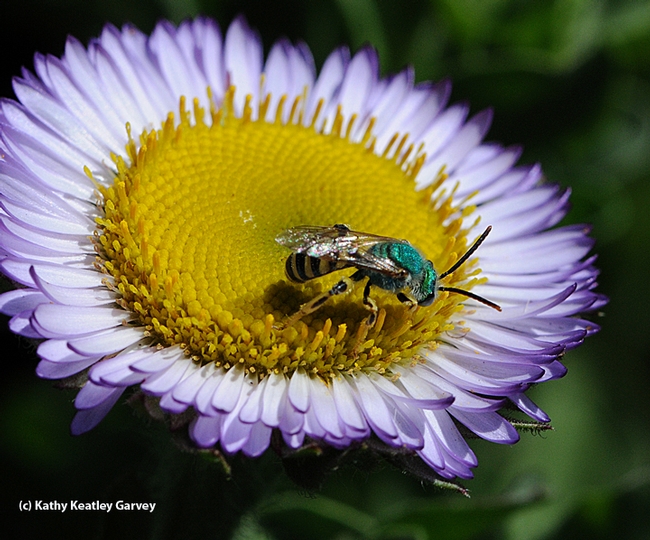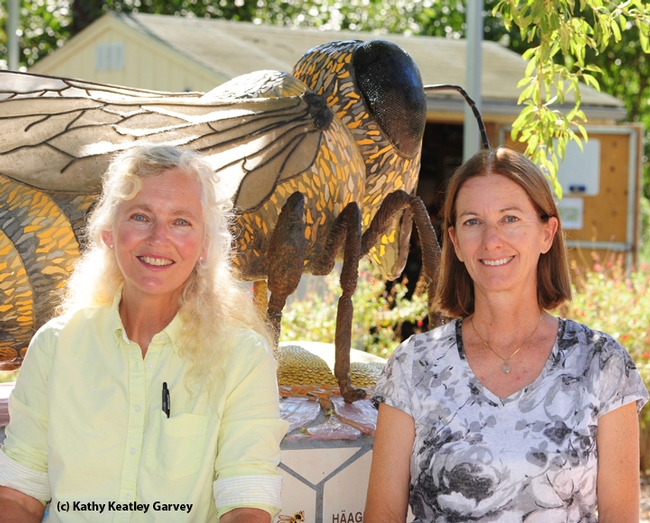"How to Attract and Maintain Pollinators in Your Garden."
That's the title of a new publication by the University of California Agriculture and Natural Resources (UC ANR) and what a gem this is. It's not only a gem, but it's free. You can download the publication on this site.
"Nearly all ecosystems on earth depend on pollination of flowering plants for their existence and survival; furthermore, from 70 to 75 percent of the world's flowering plants and over one-third of the world's crop species depend on pollination for reproduction," the authors write. "Take a stroll through your neighborhood or a botanical garden or hike in the hills, and experience the shapes and smells of flowers surrounding you. When most people look at a flower, they notice the shape, smell, composition, or structure of the flower, but few take a moment to consider why the blossom appears and smells as it does."
The publication is the work of a nine-member team: UC Berkeley entomologist Gordon Frankie and lab assistants Marissa Ponder (lead author), Mary Schindler, Sara Leon Guerrero, and Jaime Pawelek; international landscape designer Kate Frey; Rachel Elkins, UC Cooperative Extension pomology advisor, Lake and Mendocino counties; Rollin Coville, photographer, UC Berkeley; and Carolyn Shaffer, lab assistant, UC Cooperative Extension, Lake County. Native pollinator specialist Robbin Thorp, emeritus professor of entomology at UC Davis, helped edit the publication.
The publication asks and answers such questions as:
- What Is Pollination?
- Who Are the Pollinators?`
- Why Should You Care About Pollination?
- How Can You Attract Pollinators to Your Garden?
Other topics include:
- General Design Recommendations for Pollinator Habitat
- Designs to Attract Specific Pollinators
- A List of Pollinator Plants That are Successful in Most California Gardens
- Nesting Resources for Native Bees
Of bees, the authors write: "Bees are the most important biotic agent for the pollination of agricultural crops, horticultural plants, and wildflowers...approximately 4000 species of bees exist in the United States, with 1600 of those residing in California. About 20,000 species have been recorded worldwide."
And, as they succinctly point out, "Native bee species come in a variety of shapes, colors, sizes, and lifestyles that enable them to pollinate a diversity of plant species." One of our favorites is the metallic green sweat bee (Agapostemon texanus).
Last September we enjoyed a tour of Melissa's Garden, Healdsburg, a bee sanctuary owned by Barbara and Jacques Schlumberger and designed by the incredibly talented Kate Frey. “If a honey bee could design a garden, what would it look like?” That's what the Schlumbergers asked Frey back in November of 2007. Although this is a private garden, the Schlumbergers host workshops for schoolchildren, beekeepers and UC Master Gardeners, among other groups. if you ever get the opportunity to tour the garden, you should. A sculpture of Bernard the Beekeeper graces the entrance.
Melissa's Garden is mentioned in the UC ANR Publication, as is the Häagen-Dazs Honey Bee Haven at UC Davis and the UC Berkeley-Oxford Tract Bee Evaluation Garden. Also check out the UC Berkeley Urban Bee Lab website.
Attached Images:

A sculpture of Bernard the Beekeeper graces the entrance to Melissa's Garden, Healdsburg. (Photo by Kathy Keatley Garvey)

A honey bee foraging in Melissa's Garden. (Photo by Kathy Keatley Garvey)

A metallic green sweat bee on a seaside daisy. It is one of some 1600 species of bees in California. (Photo by Kathy Keatley Garvey)

International landscape designer Kate Frey (left) of Hopland and her childhood friend, Rachael Long, Yolo County farm advisor/county director of the UC Cooperative Extension, Woodland on a visit to the Haagen-Dazs Honey Bee Haven, UC Davis, in September. Behind them is the mosaic ceramic bee sculpture created by Donna Billick, co-director of the UC Davis Art/Science Fusion Program. (Photo by Kathy Keatley Garvey)